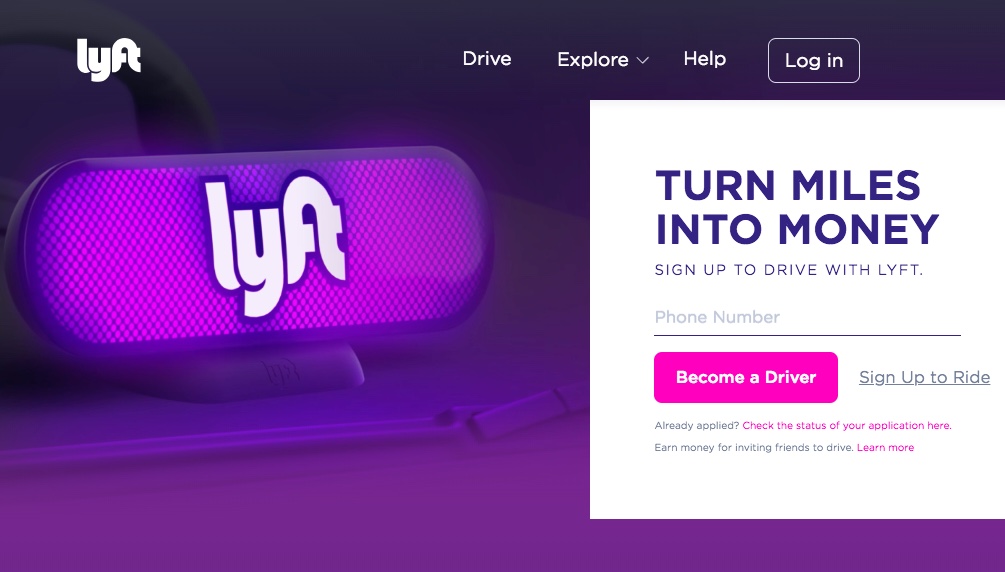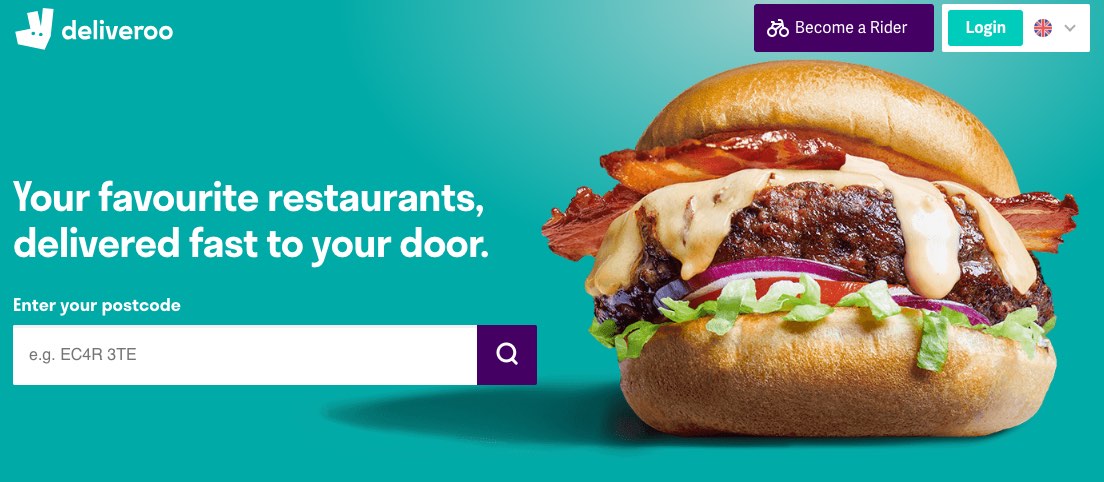Here’s a fact that might surprise you.
Adobe’s Work in Progress Study 2016 revealed that as many as one-third of U.S. office workers had a second job. And more than half (56%) predicted we would all have multiple jobs in the future. A LinkedIn study also predicts that 43% of the U.S. Workforce will be comprised of freelancers by 2020.
This is called the ‘gig economy‘ – an ecosystem where freelancing is the primary or at least a major source of income for millions of people around the world.
For freelancers, this means more flexibility, additional income and several other benefits. However, employers benefit from the gig economy too – the biggest gains being time and cost efficiencies. Companies are now picking up on this trend and making way for more freelancers to join them on board.
But before we get into how you can capitalize it – as a company or as a freelancer, let’s take a look at what the gig economy is – and why more people might end up having “gigs” than good old regular jobs – to understand this from the ground up.
Why is the gig economy growing?
The gig economy is witnessing phenomenal growth because it presents several benefits for both companies as well as freelancers.
Benefits for companies
The gig economy offers compelling cost benefits and allows companies to hire better talent. Here’s how…
On-demand expertise
Companies can hire on-demand expertise. You can hire an expert presentation designer or an SEO expert, even if you don’t have the budget to hire them full time, or don’t have enough work for them to justify a full-time role.
Scaling up rapidly
Hiring on-demand expertise also allows companies to quickly add talent while scaling up the team, and conversely, downsize without having to fire full-time employees.
Access global talent
Companies also get access to talent from different cities and even from across the world. Hiring people from multiple locations such as Eastern Europe or Asia is also a substantial cost saver.
Round-the-clock work
Freelancers from across the world are also helpful when you want round-the-clock work. This isn’t just necessary for support teams. It’s also helpful for tasks which have dependencies. Delegate a few tasks to your team in the Philippines when your day ends and they will be done when you reach office next morning.
Create new business models
The gig economy makes it possible to create entirely new business models that can grow extremely fast. Companies like AirBnB, Uber, Deliveroo, Fiverr have all been able to experience phenomenal growth because their service delivery team is entirely built up of freelancers. That kind of growth would be quite impossible to replicate by building an in-house team.
Save on benefits
Freelancers don’t have to be paid medical, pension and other benefits, which is an extremely attractive cost saving. However, a lawsuit involving Uber in the UK indicates that countries may enact legislation in future which make it mandatory for companies to pay benefits to certain types of freelancers.
Save on hiring expenses
Hiring is an expensive and time-consuming process. After all, companies don’t want to end up hiring someone who is not a right fit. This makes it necessary to build large talent acquisition teams. However, freelancers can be hired a lot faster because it’s not considered to be as high-risk a decision.
Benefits for freelancers
People’s expectations from life are evolving – especially for millennials.
More of us are seeking better work-life balance and more flexibility. We prefer a lifestyle where we can juggle more things and experiment with our careers – going the extra mile in figuring out what we love to do.
In addition, surveys by ManpowerGroup, the Freelancers Union and ReportLinker have found these reasons why employees prefer to freelance:
- A less stressful work environment
- Opportunities to learn and advance their career
- More meaningful work
- Better pay/side income
- Greater respect and empowerment
Gig economy domains
According to Katz and Krueger, more than half of the gig economy’s jobs majorly come from four industries – healthcare, education, construction, and professional and business services. Other notable categories in the gig economy include computer and mathematical, community and social services, personal care, legal services, transportation and warehousing, information and communications, and public administration.

Here are a few notable domains:
Software and technology
Tech jobs are the highest paid in the gig economy. An increasing number of companies are hiring freelance programmers in domains such as deep learning, blockchain, cryptocurrency, virtual reality, robotics and so on.
Marketing and sales
Marketing and sales related jobs are some of the most common in the gig economy. This includes content writing, social media marketing, SEO, collateral design, video editing, etc. Sales jobs usually involve activities around prospecting such as database building and database verification.
Customer support
Customer support is also growing as a gig economy segment. Liveops is a company that engages freelancers in a model similar to Uber. In fact, companies like Home Depot or AAA are engaging freelance agents as part of their support team.
Education
Education is one of the biggest gig economy domains. Many teachers choose to work beyond the classroom, generating additional income by teaching students who need additional one-on-one help.
Real estate
Real estate requires knowledge about the market. Sale and purchase decisions can’t be made without a careful analysis of whether the deal would be profitable enough to yield returns. Hence, companies look for experienced people who know the market well to help them with data regarding trends in the market which they have been too closely a part of. Lawyers, construction managers and architects are now joining the freelance network as consultants.
Cab aggregators
Cab aggregators bridge the demand-supply gap by giving drivers autonomy over their driving schedule, ensuring drivers are monetizing their asset and time.
Food delivery
Delivery being an essential part of food delivery startups, it is important to have extra hands on board. Having brought all of it online with technology, food delivery startups hire freelance riders who make deliveries in their free time.
How do you make the most out of the gig economy?
While being a part of the gig economy certainly has its perks, it does have its challenges. Where there is freedom, there is responsibility – especially with no managers to supervise how freelancers are using their time.
Both employers and freelancers need to keep certain things in mind to make the most out of the gig economy. Here are some of the most useful tips.
If you’re an employer
You might have worked with freelancers before or it could be your first time – in any case, there are always a few things which would ensure things go smoothly when working with them.
Ensure that they are focused
According to McKinsey, there are four kinds of freelancers:
- Free agents, who actively choose independent work and derive their primary income from it
- Casual earners, who use independent work for supplemental income and do so by choice
- Reluctants, who make their primary living from independent work but would prefer traditional jobs
- Financially strapped, who do supplemental independent work out of necessity

The one thing common to all of them is the fact that they’re always juggling multiple projects at a time, which might often affect their focus. Hence, it’s critical to ensure that your timelines are absolutely clear from the beginning.
Most of the time, it’s best to work with free agents, simply because they are completely dependent on freelance work for their income. They will take your work quite seriously and will deliver the best quality.
However, sometimes, it’s a good choice to go with casual earners who are looking to learn – for they often tend to dedicate focus and effort into the project and deliver results at par with your expectations, sometimes even better than a professional!
If you are offering a knowledge-based freelance role, you might want to avoid the reluctant. They are usually people who are not too talented. Even if they charge lower rates, you will have low quality work which will impact the overall productivity of your team.
Transparent communication is the key
While not having to supervise anyone and getting the job well done in hand might sound like a boon – managing freelancers can be difficult. To ensure you get the most out of the time and effort you invest (and that you don’t have to do it over and over again), it is important that you maintain an absolutely professional, transparent relationship with them, with everything from deadlines and project requirements communicated in crisp, concise points.
Another good tip would be to ensure your communication is always documented. A verbal pact never really holds in the professional world. With freelancers, it becomes all the more important to have something both can refer to in case of a disagreement. Getting a contract drafted is an extremely useful practice.
Do not mistake the freelancer for a remote worker
A remote worker is an employee of the company who doesn’t necessarily need to be present in the office, while a freelancer/contractor, on the other hand, is someone who works without any employment obligations – the terms are project-based and end with the job’s completion.
Confusing one as the other leads to wrong expectations from both ends, which never leads to desired results. Conveying the commitment is an integral part of the transparent discussion which you must have, and it’s important you know yours.
Remote workers are a part of the company – they are carefully hired in a way that they walk the talk even when they’re not coming in daily. However, freelancers cannot be expected to be too dedicated to the company. They will be sincere towards their work and the contract terms, but that’s about it. They are not very concerned about what’s happening with the company, as long as the project is executed in the desired way and they get paid.
Pay them right
Most of the time, freelancers get the job done for less money. However, this is someone’s living, even if it’s supplementary. Paying freelancers below the market rate portrays that you’re looking for a suboptimal quality of work – and will decide how much effort the freelancer will put into your project, if at all they decide to do it.
Paying fair requires you to have a good knowledge of market rates, though it mostly depends on the specifics of the project and what your budget is. You can go to various portals like Upwork to get a sense of the market rate and arrive at a ballpark.
However, the best way to arrive at a fair rate is to use salary benchmarks to calculate an hourly rate. If you are not paying them on an hourly basis, calculate the average amount of time it would take to complete a task and determine a project rate.
Invest time with them
If you want your freelancers to deliver their best work, you have to invest in the relationship. Even if they are not exactly part of the team, you should try to make them feel that they are.
Invite them to online meetings, spend time on video calls with them and invite them at your company retreats. If they work from your physical office make sure that they have access to areas of your office like the gym and the cafeteria so that they can mingle with your people.
These small steps will go a long way in increasing their commitment to the team. In fact, freelancers often continue to work for years – longer than the tenure of the average full time employees!
If you’re a freelancer

Focus on one area
Freelancers can range from people who are just dabbling in something to recognized experts who few companies can afford to hire. The key to becoming successful as a freelancer is to develop your expertise in one area. “The more specialized you are, the more premium you’re going to command,” says Rich Pearson, Upwork’s Senior VP of Marketing.
For example, if you are a marketing professional, do not take up just about any project you can get your hands on such as content writing or social media marketing. Naturally, the more time you spend in a particular area, the better you will be and consequently, you will be able to charge higher rates.
Keep your career in mind
Before taking up any project, try to determine how it adds value to your career rather than just how much it would pay. It’s best to take up projects that add value to your resume, even if they don’t pay as much as other projects. If it adds to your profile, you will be able to demand higher rates or a bigger salary in a full time job in future.
Freelance projects are also a way to land full time jobs with companies. If they really like your work, you can always approach them for a full time role.
Find the right opportunities
There are numerous websites that host freelance work opportunities. Some of the best known ones include Upwork, Freelancer and Fiverr. However, the competition on these platforms is fierce and it might be difficult to find gigs that pay you well. Rather than try to apply to as many opportunities as possible, spend time applying to only a handful of companies which are the best fit for your profile, capabilities and the types of gigs you are looking for.
Build your personal brand
The highest paid freelancers avoid these websites like Upwork and Freelancer. Instead, they invest in building their personal brands to acquire customers.
Write articles for top publications, build a presence on social media, and make sure you have a personal website that highlights your portfolio. Investing time in building a reputation as an expert will allow you to get the best jobs and charge high rates.
You can also start a blog. Blogging is a tried and true method of building a personal brand online. Most people underestimate the exponential power of blogging.
Network
Your network helps you thrive in the independent economy. A referral is probably one of the most effective ways to get the gig. If you have a good network that can refer you, then half your job is done. Many companies do not prefer going to freelance portals because of the time and effort it takes out to screen the perfect candidate – a referral takes that effort off their hands and they quickly find the right fit.
Note: Always remember one thing – companies pay for solutions, not hours. So, while you might reverse engineer from your salary at the current job to see how much you should be paid for an hour, is it important to look at how the solution adds value to the company and price the project accordingly. If you do not factor that in, you lose out on extra income.
Companies using the gig economy as part of their business model
For many companies, the Gig economy isn’t just about hiring freelancers. It’s part of their core business model. They are using technology and processes to manage their teams. Taking a look at their operations is worthwhile because it reflects trends in how gigs are shaping the economy as a whole.
Lyft

The fastest growing rideshare company in the US, Lyft has been one of the early adopters of the sharing economy, wherein drivers get paid for the number of rides. A vast majority of Lyft drivers drive part time. According to Business Insider, over 93 percent drive fewer than 20 hours a week; 92 percent are employed, seeking employment, full-time students or retirees; and 96 percent say flexible hours are very or extremely important.
Lyft was the first company to offer in-app tipping, along with other features such as same-day payments and low-cost car rentals. What’s more, it recently tied up with Guild to provide access to education to contractors!
TaskRabbit

Ikea-acquired TaskRabbit is an aggregator which connects customers with people who can contribute with home maintenance services like putting furniture together, cleaning and deliveries. How things work is quite simple – customers flag the task they need to get done, and “taskers” can select the work nearby, choosing the rate at which they will be working. According to Forbes, TaskRabbit has only 60 full time employees but more than 60,000 workers who use the platform to get jobs.
Deliveroo

UK-based Deliveroo, a food-ordering app, ties up with freelance riders to deliver restaurant orders. People can sign up to make deliveries on their free time. It operates in more than 200 cities across 13 countries and has raised almost a billion dollars of investor capital.
Where are we headed?
According to a recent study by the McKinsey Global Institute, up to 162 million people in the United States and Europe are involved in some form of independent work. This has brought to attention how the way we work has evolved over time. However, we have a long way to go, and need to collectively work towards fostering a sustainable growth of the gig economy,
Employers need to realize that freelancers will become a major part of the workforce. Therefore, they can’t be treated as they have been in the past and have to be integrated more closely with their teams. Similarly, freelancers need to commit to their gigs more seriously if they are to earn higher rates and get higher-quality jobs.
The gig economy is raising several questions about the rights of freelancers and employers’ obligations towards them. Governments across several countries are considering means to bring the gig economy within the scope of regulations that will protect freelancer’s rights.
Companies who take proactive action to deliver more benefits to their employees will gain the most – because their freelancers will be prepared to go the extra mile to deliver their best.
Conclusion
The gig economy is primarily driven by the need to capitalize on available time and resources, without any long-term commitments. Every company needs the best job done, and the best might not be available for a long-term commitment.
If you are not a part of the gig economy yet, then you now know everything you need to – from what it is to how you can fit in and leverage it. If there’s anything in particular that has worked for you from the employer or the freelancer point of view, then do let us know in the comments section below!

Liam Martin is a serial entrepreneur, co-founder of Time Doctor, Staff.com, and the Running Remote Conference, and author of the Wall Street Journal bestseller, “Running Remote.” He advocates for remote work and helps businesses optimize their remote teams.


